

Boosting water table can curb climate risks, says study. Thawing Arctic permafrost effects: Methane release, Siberian craters and anthrax. The Arctic permafrost is starting to thaw, releasing the ground from the frozen state it has been in for thousands of years.

At present, permafrost in the Northern Hemisphere covers an area spanning some 20 million square kilometres and is home to tens of millions of people. Regions covered include parts of the US, Canada and Russia. But what will happen when it defrosts? Max Holmes, the deputy director and senior scientist at the Woods Hole Research Centre, explains: What is permafrost and why is it thawing? Permafrost is permanently frozen ground. World's largest tropical peatland found in Congo basin. Geogarific: Water and Carbon in the Amazon Rainforest. For the past 6 years teaching geography A-level I've had to choose between ecosystems and plate tectonics so sadly I haven't taught much on tropical rainforests for quite a while (you can guess which of the two aforementioned topics is more popular!). Scientists have long feared this ‘feedback’ to the climate system. Now they say it’s happening. (iStock) At a time when a huge pulse of uncertainty has been injected into the global project to stop the planet’s warming, scientists have just raised the stakes even further.

In a massive new study published Wednesday in the influential journal Nature, no less than 50 authors from around the world document a so-called climate system “feedback” that, they say, could make global warming considerably worse over the coming decades. That feedback involves the planet’s soils, which are a massive repository of carbon due to the plants and roots that have grown and died in them, in many cases over vast time periods (plants pull in carbon from the air through photosynthesis and use it to fuel their growth). It has long been feared that as warming increases, the microorganisms living in these soils would respond by very naturally upping their rate of respiration, a process that in turn releases carbon dioxide or methane, leading greenhouse gases. Giant icebergs play 'major role' in ocean carbon cycle.
Giant icebergs could be responsible for the processes that absorb up to 20% of the carbon in the Southern Ocean's carbon cycle, a study suggests.
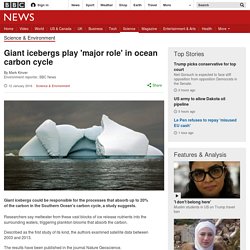
Researchers say meltwater from these vast blocks of ice release nutrients into the surrounding waters, triggering plankton blooms that absorb the carbon. Described as the first study of its kind, the authors examined satellite data between 2003 and 2013. Is the boreal forest on the edge of a climate change tipping point? The boreal forest encircles the Earth around and just below the Arctic Circle like a big carbon-storing hug.
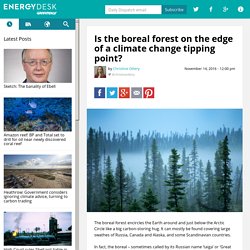
It can mostly be found covering large swathes of Russia, Canada and Alaska, and some Scandinavian countries. In fact, the boreal – sometimes called by its Russian name ‘taiga’ or ‘Great Northern Forest’ – is perhaps the biggest terrestrial carbon store in the world. So it’s important to protect in a world where we’re aiming for 1.5 or – at worst – under two degrees celsius of global warming. “Our capacity to limit average global warming to less than 2 degrees is already highly improbable, so every possible mechanism to reduce emissions must be employed as early as possible.
Maintaining and recovering our forests is part of that solution,” Professor Corey Bradshaw, a leading researcher into boreal forests based at the University of Adelaide, told Energydesk. But there’s a problem. Slow-motion wrecks: how thawing permafrost is destroying Arctic cities. At first, Yury Scherbakov thought the cracks appearing in a wall he had installed in his two-room flat were caused by shoddy workmanship.
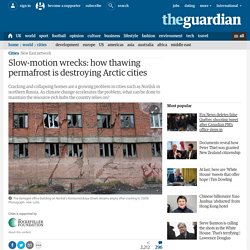
But then other walls started cracking, and then the floor started to incline. “We sat on the couch and could feel it tilt,” says his wife, Nadezhda, as they carry furniture out of the flat. BBC Taster - Bitesize Masterclass No.2. Globe Carbon Cycle. GLOBE Carbon Cycle is focused on bringing the most cutting edge research and research techniques in the field of terrestrial ecosystem carbon cycling into the classroom.
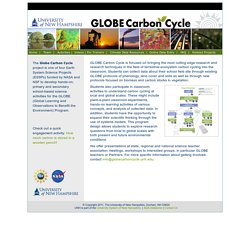
Students can collect data about their school field site through existing GLOBE protocols of phenology, land cover and soils as well as through new protocols focused on biomass and carbon stocks in vegetation. Students also participate in classroom activities to understand carbon cycling at local and global scales. These might include plant-a-plant classroom experiments, hands-on learning activities of various concepts, and analysis of collected data. In addition, students have the opportunity to expand their scientific thinking through the use of systems models. This program design allows students to explore research questions from local to global scales with both present and future environmental conditions.
CarbonCycleBackground. Ever wondered how #clouds form? Our video explains how in under two minutes! Surface water shifting around the Earth. Image copyright deltares Scientists have used satellite images to study how the water on the Earth's surface has changed over 30 years.
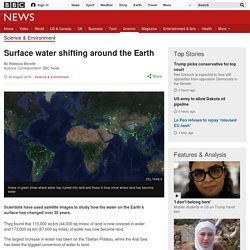
They found that 115,000 sq km (44,000 sq miles) of land is now covered in water and 173,000 sq km (67,000 sq miles) of water has now become land. LowPerm - more than methane. Drought 'shuts down Amazon carbon sink' Image copyright Roel Brienen A recent drought shut down the Amazon Basin's carbon sink by killing trees and slowing trees' growth rates, a study has shown.

SCO WaterandCarbonCycling. Groundwater True/False Quiz: USGS Water Science School. Diagram of the water cycle, showing natural and human processes.